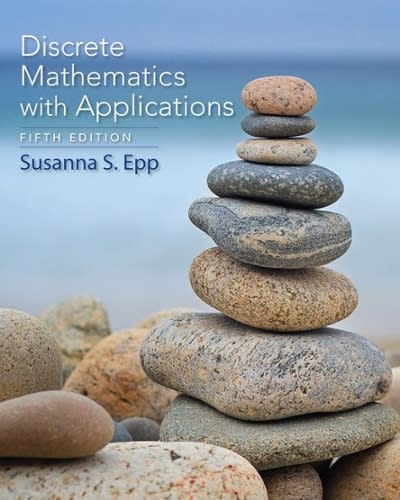Question
1. In a large population, 35% of voters intend to vote for party A at the next election. A random sample of 200 voters is
1. In a large population, 35% of voters intend to vote for party A at the next election. A
random sample of 200 voters is selected from this population and asked which party
they will vote for.
Calculate, approximately, the probability that 80 or more of the people in this sample
intend to vote for party A. [4]
2.Let N be the random variable that describes the number of claims that an insurer
receives per month for one of its claim portfolios. We assume that N has a Poisson
distribution with E[N] = 50. The amount Xi
of each claim in the portfolio is normally
distributed with mean = 1,000 and variance 2 = 2002. The total amount of all
claims received during one month is
1
N
i
i
S X
=
=
with S = 0 for N = 0. We assume that N, X1, X2, ... are all independent of each other.
(i) Specify the type of the distribution of S. [1]
(ii) Calculate the mean and standard deviation of S. [3]
[Total 4] CT3 A20113 PLEASE TURN OVER
3.Let X1, X2, X3, X4, and X5 be independent random variables, such that Xi
~ gamma
with parameters i and for i = 1, 2, 3, 4, 5. Let
5
1
2 i
i
S X
=
= .
(i) Derive the mean and variance of S using standard results for the mean and
variance of linear combinations of random variables. [3]
(ii) Show that S has a chi-square distribution using moment generating functions
and state the degrees of freedom of this distribution. [4]
(iii) Verify the values found in part (i) using the results of part (ii). . [1]
[Total 8]
4.Consider two random variables X and Y, for which the variances satisfy V[X] = 5V[Y]
and the covariance Cov[X,Y] satisfies Cov[X,Y] = V[Y].
Let S = X + Y and D = X Y.
(i) Show that the covariance between S and D satisfies Cov[S,D] = 4V[Y]. [3]
(ii) Calculate the correlation coefficient between S and D. [3]
[Total 6] CT3 A20114
5.An insurance company distinguishes between three types of fraudulent claims:
Type 1: legitimate claims that are slightly exaggerated
Type 2: legitimate claims that are strongly exaggerated
Type 3: false claims
Every fraudulent claim is characterised as exactly one of the three types. Assume that
the probability of a newly submitted claim being a fraudulent claim of type 1 is 0.1.
For type 2 this probability is 0.02, and for type 3 it is 0.003.
(i) Calculate the probability that a newly submitted claim is not fraudulent. [1]
The insurer uses a statistical software package to identify suspicious claims. If a
claim is fraudulent of type 1, it is identified as suspicious by the software with
probability 0.5. For a type 2 claim this probability is 0.7, and for type 3 it is 0.9.
Of all newly submitted claims, 20% are identified by the software as suspicious.
(ii) Calculate the probability that a claim that has been identified by the software
as suspicious is:
(a) a fraudulent claim of type 1,
(b) a fraudulent claim of any type.
[5]
(iii) Calculate the probability that a claim which has NOT been identified as
suspicious by the software is in fact fraudulent
Step by Step Solution
There are 3 Steps involved in it
Step: 1

Get Instant Access to Expert-Tailored Solutions
See step-by-step solutions with expert insights and AI powered tools for academic success
Step: 2

Step: 3

Ace Your Homework with AI
Get the answers you need in no time with our AI-driven, step-by-step assistance
Get Started


